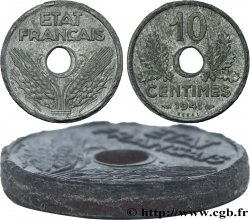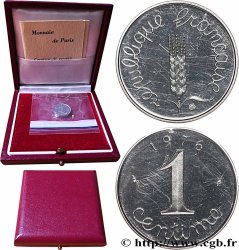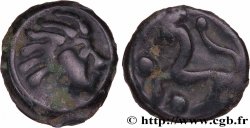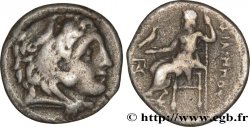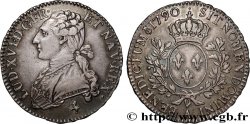E-auction 321-237917 - fmd_452310 - Piéfort Belle Épreuve de 100 francs Égalité - La Fayette 1987 Pessac F.455/2P
Usted debe firmar y ser un comprador aprobado para pujar, Inicia sesión para pujar. Las cuentas están sujetas a la aprobación y el proceso de aprobación se alcanzan dentro de las 48 horas. No espere hasta el día en una venta se cierra el registro.Al hacer una oferta en este artículo usted está firmando un contrato jurídicamente vinculante para comprar este artículo y haga clic en «oferta» constituye una aceptación de los términos de uso de e-auctions de cgb.fr.
La subasta debe ser colocado en euros enteros cantidades venta only.The se cerrará en el momento en la descripción del artículo, no se ejecutarán las ofertas recibidas en el sitio después de la hora de cierre. Veces Transmition pueden variar y las ofertas pueden ser rechazadas si espera a los últimos segundos. Para más información envie el FAQ.
SIN GASTOS PARA LOS COMPRADORES.
SIN GASTOS PARA LOS COMPRADORES.
| Valoración : | 60 € |
| Precio : | 62 € |
| Oferta más alta : | 62 € |
| Fecha de fin de la venta : | 10 junio 2019 15:01:30 |
| participantes : | 10 participantes |
Tipo : Piéfort Belle Épreuve de 100 francs Égalité - La Fayette
Fecha: 1987
Nombre del taller / ciudad: Pessac
Cantidad acuñada: 50.000
Metal: plata
Milésimas de pureza : 950 ‰
Diámetro: 31 mm
Eje de acuñación: 6 h.
Peso: 30,08 g.
Canto: lisse
Grado de rareza: R1
Comentarios sobre el estado de conservación:
Exemplaire encapsulé
N° en los catálogos de referencia :
Anverso
Titulatura del anverso: GÉNÉRAL LA FAYETTE . / RÉPUBLIQUE FRANÇAISE ..
Descripción del anverso: Portrait de La Fayette tête tournée à gauche ; en bas du buste d'AP. B. DUVIVIER.
Reverso
Titulatura del reverso: LIBERTÉ / ÉGALITÉ / FRATERNITÉ / 100 F / 19 - 87.
Descripción del reverso: Bonnet phrygien surmontant la devise de la France ; signature DURAND MEGRET à droite près du listel.
Comentario
C'est Marie Joseph, marquis de La Fayette (1757-1834) qui fut choisi pour symboliser l'Égalité. Après avoir été l'un des héros de la Guerre d'Indépendance des États-Unis (1777-1783). Il fut le très populaire commandant de la Garde Nationale avant de faire tirer sur le peuple en 1791 au Champ de Mars. Pressentant un destin funeste, il quitta la France en 1792 et fut interné par les Autrichiens pendant cinq ans. Rentré en France après le coup d'état du 18 brumaire, il n'eut aucun rôle sous l'Empire mais fut le chef de file de l'opposition libérale sous la Restauration. Héros de la Révolution de 1830, il soutint Louis-Philippe d'Orléans, mais finit sa vie dans l'opposition. Au regard de ce parcours, on s'interroge sur l'opportunité du choix de La Fayette pour figurer l'Égalité dans le cadre de la commémoration du bicentenaire de la Révolution... .
It was Marie Joseph, Marquis de La Fayette (1757-1834) who was chosen to symbolize Equality. After having been one of the heroes of the American War of Independence (1777-1783), he was the very popular commander of the National Guard before ordering an attack on the people in 1791 on the Champ de Mars. Sensing a dire fate, he left France in 1792 and was interned by the Austrians for five years. Returning to France after the coup d'état of 18 Brumaire, he played no role under the Empire but was the leader of the liberal opposition during the Restoration. A hero of the Revolution of 1830, he supported Louis-Philippe d'Orléans, but ended his life in opposition. In light of this journey, one wonders about the appropriateness of choosing La Fayette to represent Equality in the context of the commemoration of the bicentenary of the Revolution...
It was Marie Joseph, Marquis de La Fayette (1757-1834) who was chosen to symbolize Equality. After having been one of the heroes of the American War of Independence (1777-1783), he was the very popular commander of the National Guard before ordering an attack on the people in 1791 on the Champ de Mars. Sensing a dire fate, he left France in 1792 and was interned by the Austrians for five years. Returning to France after the coup d'état of 18 Brumaire, he played no role under the Empire but was the leader of the liberal opposition during the Restoration. A hero of the Revolution of 1830, he supported Louis-Philippe d'Orléans, but ended his life in opposition. In light of this journey, one wonders about the appropriateness of choosing La Fayette to represent Equality in the context of the commemoration of the bicentenary of the Revolution...








 Informar de un error
Informar de un error Imprimir la página
Imprimir la página Comparte mi selección
Comparte mi selección Haz una pregunta
Haz una pregunta Consignar / vender
Consignar / vender
 Descriptivo
Descriptivo
